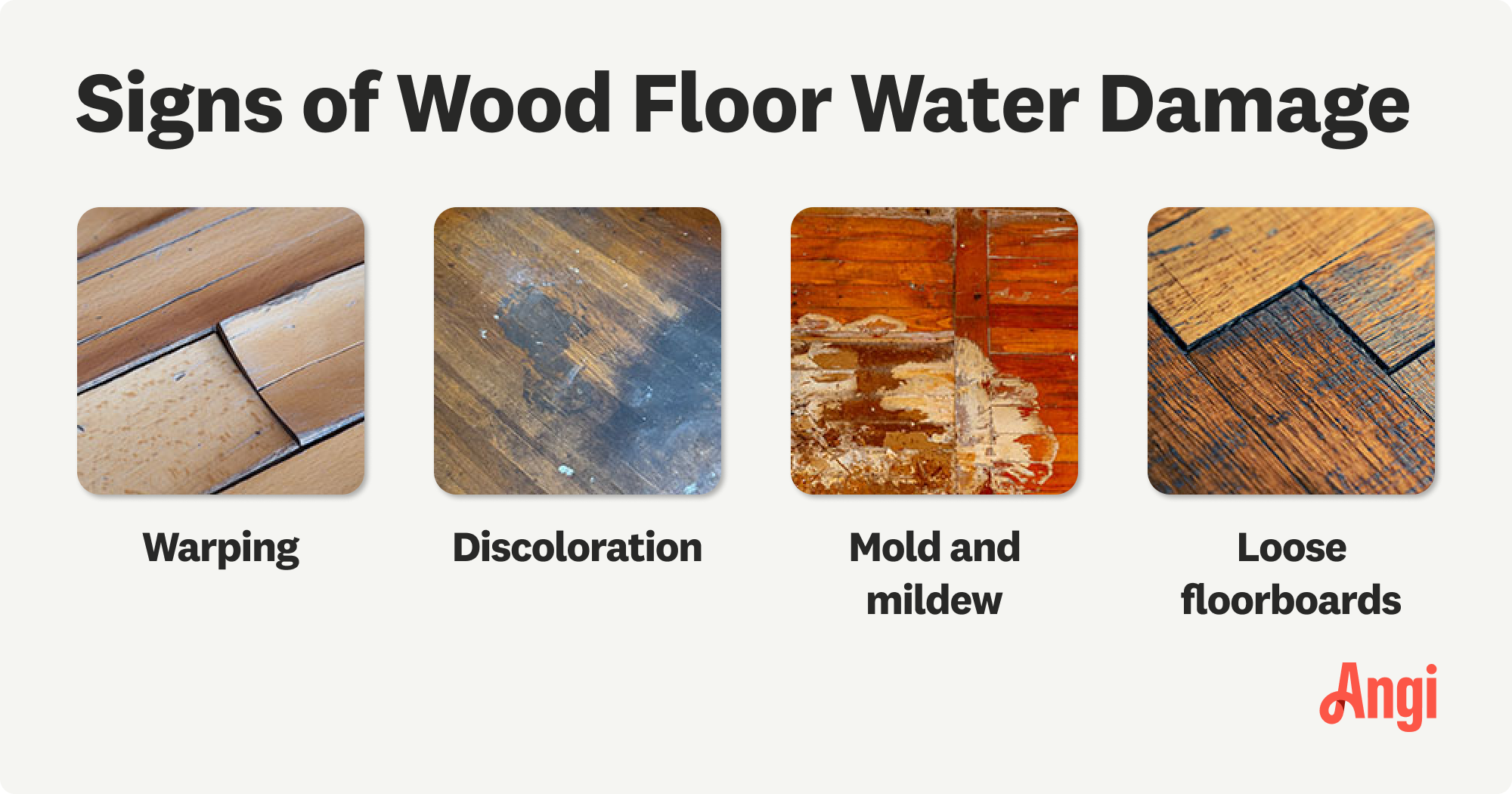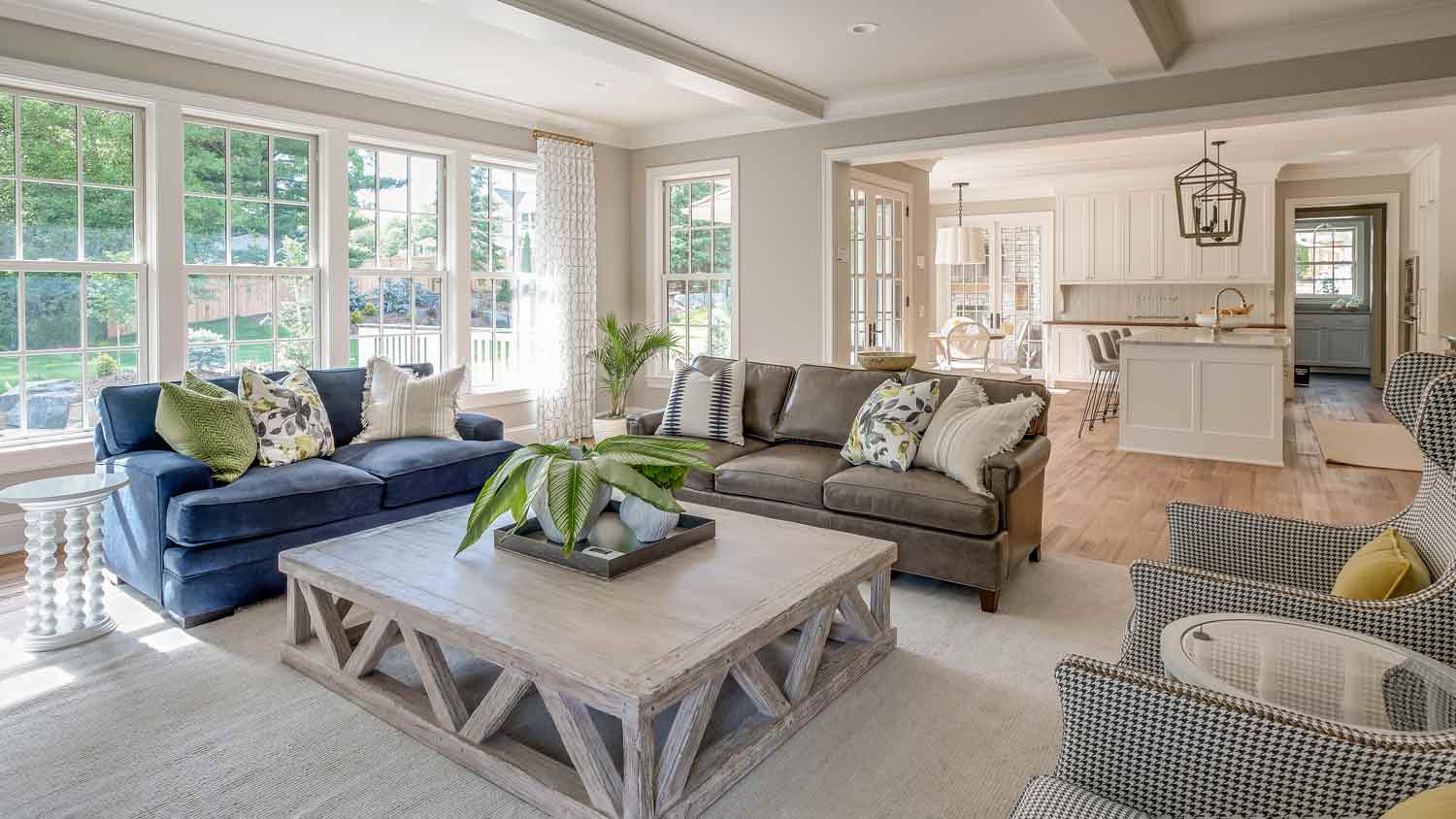How to Fix Water-Damaged Hardwood Floors Step-by-Step
Save your water-damaged wood floor with this step-by-step guide


- Shop vacuum
- Blower fans
- Floor sander
- Pry bar
- Hammer
- Basic cleaning supplies
- Abrasive cleaner
- Bleach
- Bucket for mixing
- Large sponge
Hardwood floors are naturally beautiful and elegant, but if you have a plumbing leak or experience flooding, they’ll quickly warp and show signs of water damage. Don’t panic—it’s possible to DIY the repairs. In this guide, we’ll explain how to fix water-damaged wood floors to help you bring that upscale beauty back to your living space.
When water damage is discovered, turn off the power and disconnect all electronic devices from any affected area.

Prepping to Repair Water-Damaged Wood Floor
When water runs wild in a home fitted with electricity, safety should always come first. Before you start pulling up wet floorboards, turn off all appliances and cut the power in the water-damaged area.
You’ll also need to make sure you have enough new floorboards to replace the damaged ones. You can check utility rooms and other storage areas in your home to see if the installer left behind extra flooring material. If not, bring a piece of damaged floor to your local home improvement store and ask if they can help you match it.
Remove Surface Water
Mold grows within 24 hours after water damage, so the longer water sits, the more damage it causes to your wood floor. Your first order of business should be to remove any puddling on your floors. Use a shop vacuum to remove surface water as soon as you can. Using a wide attachment to the vacuum hose will effectively remove most surface water. Once you get up what you can with your vacuum, use a large sponge to remove what’s left.
Clean the Floor
 Photo: Andrii Zorii / iStock / Getty Images Plus
Photo: Andrii Zorii / iStock / Getty Images PlusUse a mild wood floor cleaning solution or mix detergent, water, and disinfectant to create your own cleaning solution. Next, carefully scrub all affected areas, including water-damaged baseboards, with a soft-bristle brush.
Inspect for Mold and Treat It
Check the floors for signs of mold. If mold is present, use a more abrasive cleaner and a mold treatment solution to clean the affected area. Once the discoloration or mold growth is removed, rinse the surface with clean water and wipe it dry using your sponge.
Let the Floors Dry
Before you move on to the actual replacement, you need to let your floor dry completely. Set up blower fans in the room and open up your windows to accelerate the drying process. This can take anywhere from 24 to 72 hours, depending on your climate and the extent of the water damage.
Sand the Damaged Floor
 Photo: ba11istic / Adobe Stock
Photo: ba11istic / Adobe StockIf you notice minor cupping or crowning, using a floor sander can smooth out the surface. Note that you’ll need to refinish the sanded areas to match the existing floors, so only attempt this if you have matching stains and protective finishes. If you’re uncomfortable sanding your floors, don’t have a matching stain, or see excessive cupping and crowning, hire a water damage professional instead to get the job done.
For Painted Floors: Additional Mold Treatment
Mold can easily grow under surface paint. Therefore, if your floors were painted, you should apply additional mold treatment now that the wood is exposed. Use an abrasive cleaner with disinfectant properties to clean the naked wood surface. You can also use mild bleach as your disinfectant. Once finished, wait for the floors to dry.
Replace Damaged Panels
If any floor panels look severely damaged, use a pry bar to remove them. Repeat cleaning and mold treatment for the subfloor underneath the floor and wait until it is fully dry.
Most homes use standard-sized wood flooring, and you can sometimes find replacement panels at your local home improvement store. You may need to contact your flooring manufacturer for an exact match, though. Once you have your supplies, apply flooring adhesive to the back of your new panel and align it in place. Hold the panel down for a few minutes to let the glue settle.
Stain and Refinish
 Photo: Cavan / Adobe Stock
Photo: Cavan / Adobe StockFinally, repaint, restain, or refinish the floor. This provides additional protection for your repaired floors. Most stain-resistant wood floor sealers are oil-based and thus increase the floor’s water resistance. You can also use water-based urethane waterproofing sealers. Use two or three coats of sealers, and make sure the previous coat is fully dry before applying the next layer.
Mistakes to Avoid When Restoring Water-Damaged Wood Floors
Restoring water-damaged wood floors is a challenging DIY project, especially since you want a professional look once you’re done. There are a few key mistakes to avoid when doing this work.
Failing to address the source of the water: If you’re repairing your floors after a flood caused by a natural weather event, you’re in the clear. But if your floors were damaged from a roof leak or plumbing leak, always address the source of the leak first. Otherwise, you’ll just end up with repeat damages.
Rushing the drying process: Wood takes a minimum of 24 hours to dry, and you should really run fans for 48 to 72 hours to be safe. Sanding too early will lead to additional warping and cupping after you finish, which means you’ll just need to start the process over.
Not checking the condition of the subfloor: When you pull up damaged floorboards, be sure to check the subfloor for signs of damage. If there’s water damage or mold growth at that level, call in a water damage professional immediately. You’ll likely need to replace portions of the subfloor, too, which is a major undertaking.
Ignoring mold: Never ignore signs of mold on or under your flooring. Remove the mold with an abrasive cleaner first, and be extra careful to dry the flooring before you sand, replace, and refinish. Mold will continue growing under flooring and can lead to poor indoor air quality and further damage.
Not choosing a matching finish: Make sure you have stain and protective finish left over from when you originally finished your flooring. If you don’t, the replacement panels won’t match. Consider hiring a professional to sand and refinish the entire floor if you don’t have a matching stain.
DIY vs. Hiring a Pro
Repairing water-damaged wood floors is doable but often time-consuming, especially when factoring in the drying times needed between steps. It’s much more challenging than dealing with other types of floor materials, like repairing laminate floors after water damage, so you may want to call a pro. While replacing floorboards that have topical damage is doable as a DIYer, simply repairing the floor may not be your ultimate fix, as there could be other types of water damage occurring around or under the floors.
If you’ve never worked with wood flooring before, or you suspect that the water damage runs deeper than the surface of your floors, call in a local water damage restoration company to take a look. Water damage restoration costs an average of $3,800, but a pro can assess the extent of the damage, help you decide if you need subfloor repairs, and perfectly match your new boards to the existing ones for a clean, professional look.
Frequently Asked Questions
For light water damage that has caused minimal cupping and crowning, you can often get away with drying the floor completely, sanding it back to level, and refinishing it. For more extensive damage, especially if you suspect that the water may have compromised the subfloor underneath, you’ll need to remove the damaged floorboards and replace them. Be sure to check the subfloor for damage while you have the boards up.
Unfortunately, no, a wet wood floor that has shown signs of cupping, crowning, or warping will not go back to its original condition on its own, even after it dries completely. For minor movement or swelling, you can dry the area thoroughly with blower fans and then sand the floor back to level. For more severe damage, you’ll need to remove and replace the damaged boards and then refinish them to match the existing floor.
Yes, mold can easily grow under your hardwood floors, especially if your house has recently flooded or if there is a leak from a pipe under the floor. Hardwood floors can trap moisture beneath them, creating the perfect environment for mold to grow. Similarly, mold can also grow under your wood floor’s surface paint.
Consider replacing your water-damaged floor if there’s extensive damage, including crowning, cupping, warping, or buckling. Depending on the type of damage, water damage can affect the structural integrity of your home. If your home’s structural integrity is compromised and issues like rot or mold are present, it’s likely better to replace than repair. For some water damaged floors, repairs can only go so far and wind up being a temporary fix that requires numerous attempts at repairing and refinishing. Talk to a water damage restoration professional about whether they recommend repairing or replacing your floors.















